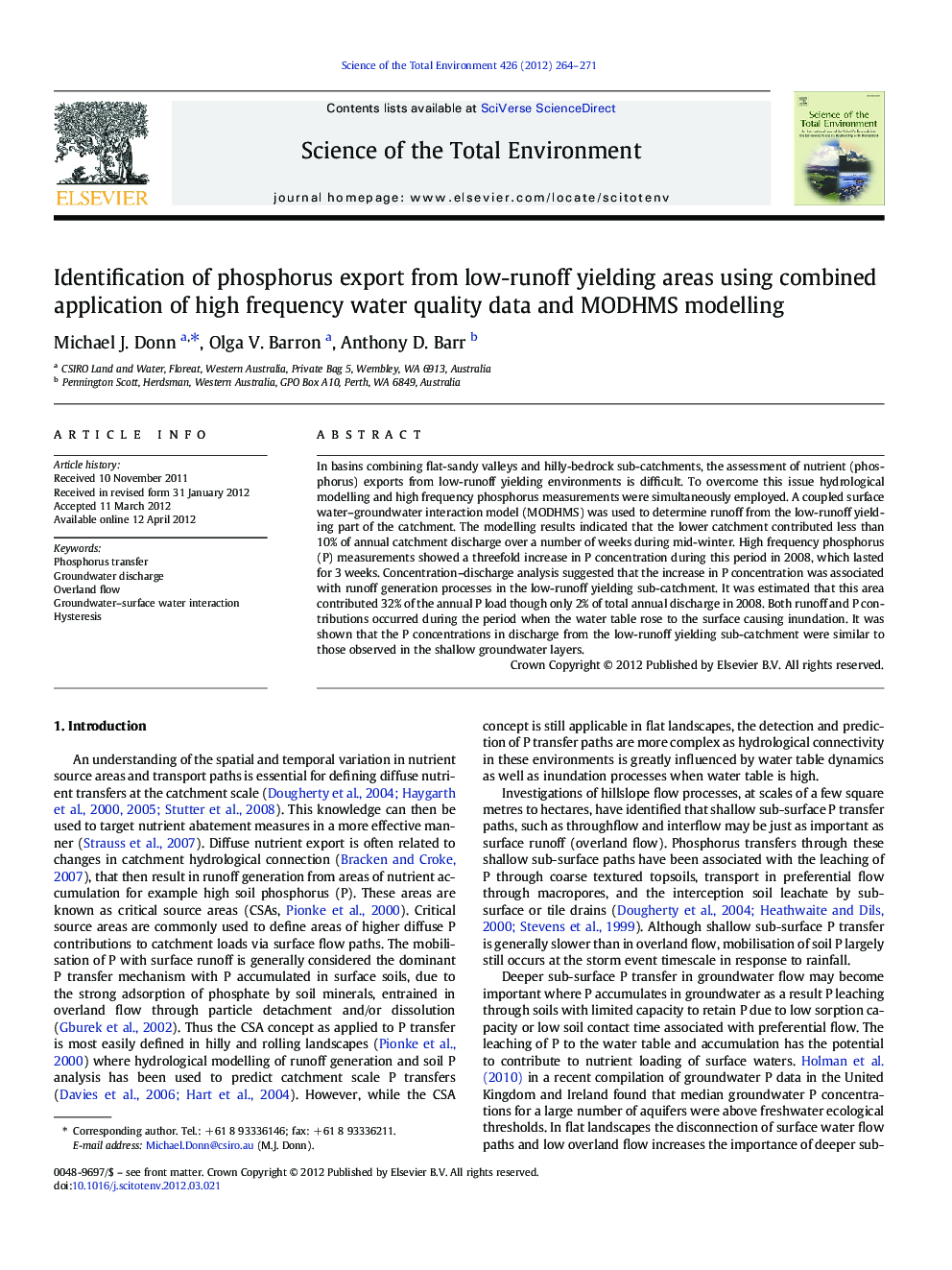| Article ID | Journal | Published Year | Pages | File Type |
|---|---|---|---|---|
| 4429478 | Science of The Total Environment | 2012 | 8 Pages |
In basins combining flat-sandy valleys and hilly-bedrock sub-catchments, the assessment of nutrient (phosphorus) exports from low-runoff yielding environments is difficult. To overcome this issue hydrological modelling and high frequency phosphorus measurements were simultaneously employed. A coupled surface water–groundwater interaction model (MODHMS) was used to determine runoff from the low-runoff yielding part of the catchment. The modelling results indicated that the lower catchment contributed less than 10% of annual catchment discharge over a number of weeks during mid-winter. High frequency phosphorus (P) measurements showed a threefold increase in P concentration during this period in 2008, which lasted for 3 weeks. Concentration–discharge analysis suggested that the increase in P concentration was associated with runoff generation processes in the low-runoff yielding sub-catchment. It was estimated that this area contributed 32% of the annual P load though only 2% of total annual discharge in 2008. Both runoff and P contributions occurred during the period when the water table rose to the surface causing inundation. It was shown that the P concentrations in discharge from the low-runoff yielding sub-catchment were similar to those observed in the shallow groundwater layers.
► Hydrological modelling and high frequency phosphorus measurements were used to analyse phosphorus exports. ► Flat topography and shallow groundwater influence water and phosphorus fluxes. ► Coupled surface water–groundwater model was required to estimate low runoff yielding area. ► High frequency phosphorus measurements enabled phosphorus source identification. ► Low runoff yielding area was determined to be the largest phosphorus source.
